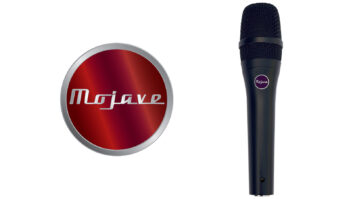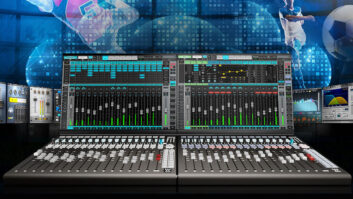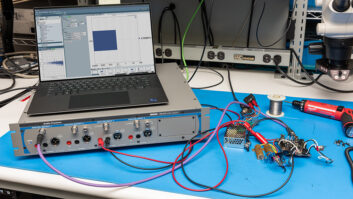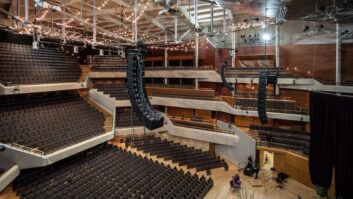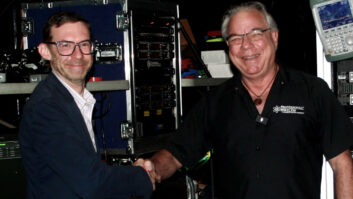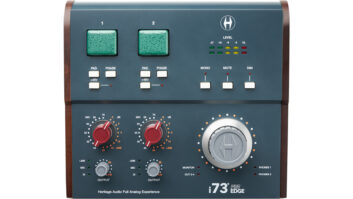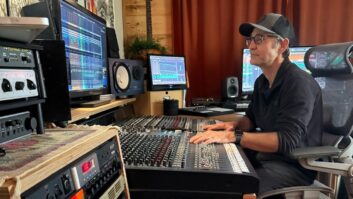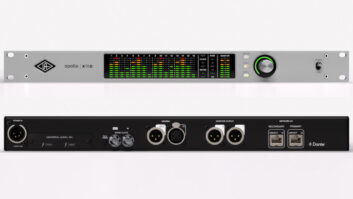
Evolving the management team of a pro audio manufacturer is a little like putting together a mix. You might have a perfectly good thing going, but with some careful fine-tuning, bringing in just the right elements to work harmoniously with what’s already there, you can take it to the next level. That’s certainly what’s happened with Mojave Audio.
The company, founded in the garage of mic designer David Royer in 1985 as a custom pro audio gear shop that built studio microphones, mic preamps and compressors, developed a fervid following over the years among high-end engineers. While Royer found great success with his R-121 ribbon microphone, introduced by Royer Labs in 1998, the original business continued on and became Mojave Audio Inc. in 2005 with the introduction of a new name to the mix, Dusty Wakeman.

“My first work as a recording engineer was in Houston in the mid-’70s,” says Wakeman. “My first sales gig was at Brook Mays Music, also in Houston. I relocated to Los Angeles in 1977 and worked at West L.A. Music until 1980, when I co-founded Mad Dog Studios in Venice, CA. We moved Mad Dog to a much larger facility in Burbank in 1995, where it operated until 2008. After becoming a fan of Royer Ribbon mics in the early 2000s, I had a chance to hear the Mojave MA-200 prototype—it was love at first listen! I started with Mojave Audio in 2005, where I serve as president.”
The new Mojave Audio launched that year with the MA-200 and became the home of Royer’s condenser mic designs, as he’d been building them in his garage for 10 years by that point. “We slowly added more models, one at a time, until we got to our current lineup,” says Wakeman. “And there are new models in the works.”
More recently, another element was brought into the mix: Colin Liebich, Mojave Audio’s CFO. The son of a Harvard physicist, Liebich grew up around high-end acoustics and was mentored from the age of 14 by the man who singlehandedly brought sound to the 1969 Woodstock festival, Bill Hanley of Hanley Sound.
“Last year, I bought out John Jennings, founding partner of Mojave Audio, so I could work with both Dusty Wakeman and David Royer,” says Liebich. “This, coinciding with a longstanding relationship with BAE Audio as well as owning Plastic Dog Recording in West L.A., made perfect sense. I’m very lucky I get to be part of high-quality brands I value and respect, and we recently added relationships with both Amphion and Ocean Way Audio to the family.”
Today, Mojave Audio offers a variety of microphones from its base in Burbank, CA, staffed by three full-time employees and several independent contractors. The microphones are mostly constructed overseas, but are built with high-end, U.S.-made components: NOS tubes, transformers, FETs and so on. When the mics hit our shores, however, their journey to the marketplace is far from over; instead, they go through rigorous testing and QC, as David Royer personally listens to each mic before it goes out the door.
As befits a small, ambitious manufacturer, staffing is tightly focused. “David Royer is behind the designs as well as overseeing testing, repair and product development,” says Liebich. “The Burbank facility has about five folks handling the day-to-day and making sure deliveries from our overseas factory get processed and added to inventory. My role focuses mainly on sales and CFO-type duties. With Dusty equally contributing to major decisions, we make effective partners in managing the company together. We are very lucky to have a long list of amazing retailers effectively selling our line domestically and overseas.”
Along with those retailers, the company maintains relationships with numerous studios and audio pros, which plays a role in the ongoing creation of new microphones, says Wakeman: “As far as product development goes, David designs the mics and builds prototypes, and we all are involved in field testing. Besides our own studios, we are fortunate to have access to so many sets of ‘golden ears’ here in L.A. to check out new designs.”
That said, Wakeman readily acknowledges that the high-end recording world is changing, and at no time more so than this moment. “Our mics are used every day in world-class studios around the globe, but right now it’s all about recording at home,” he says. “Due to the pandemic, so many artists and musicians are recording at home, and many of them for the first time. We are currently focused on keeping up with the spike in demand, but we have several new models in development.”
And what do they have in mind? Liebich hints broadly, “With the current state of things, we are seeing large numbers of people crowding into the home studio market. Whether tracking cues for John Williams or creating tracks for an individual client, more and more professionals are becoming self-reliant, wanting to go to the next level of home recording. We do have some ideas for the future, but we might start with something you put in front of a kick drum, guitar amp or possibly use on a vocal. It’s a very versatile relic we hope to resurrect from the land of the vintage.”
Review: Mojave MA-1000 Large-Diaphragm Tube Condenser Microphone, by Russ Long, June 4, 2018
Wakeman, on the other hand, can’t wait to spill the beans: “David has long wanted to produce his modern interpretation of the classic Sony C-37a, which has been getting some attention lately, so it seems like a good time to bring it to market. The prototype sounds amazing! We are field testing it now.” But wait—there’s more! He adds, “I have long wanted to produce the Mojave of dynamic mics. We have a prototype of it that we are also very excited about.”
Regardless of whatever its next microphones may be, the Mojave team remains focused and in it for the long haul. “We want to grow the company, innovate and make sure to satisfy the recording community as it evolves,” says Liebich.
Fulfilling the community’s needs, fortunately, is built into the company’s DNA, as it is just as entrepreneurial and focused on sound as its customers are. “My background as a recording engineer serves me on the technical and sales side, as I actually use the mics we make,” says Wakeman. “Meanwhile, my experience as a studio/small business owner is invaluable on the administrative side. We are a small company, so I wear a lot of hats, but we all love music and audio—and getting great-sounding mics in the hands of artists and engineers.”
Mojave Audio • www.mojaveaudio.com
This story was originally published in the June 2020 issue of Pro Sound News as “View from the Top: Dusty Wakeman and Colin Liebich, Mojave Audio.” View from the Top is a monthly column in which audio industry leaders are invited to share stories about company challenges and successes.
